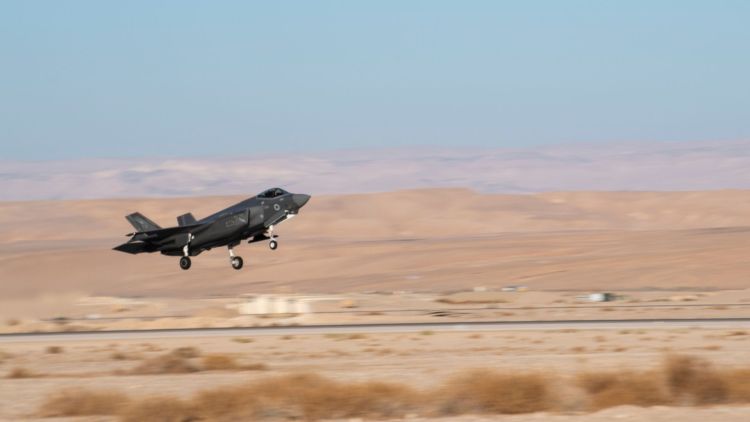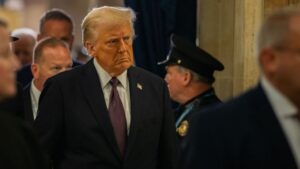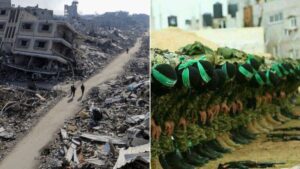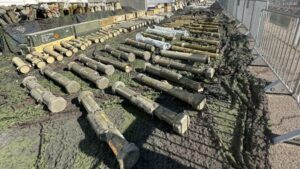Israel’s recent strikes on Iran have shaken up an already tense Middle Eastern landscape, targeting Iran’s air defenses and key missile production facilities.
This was no small operation—reports say Israel deployed around 100 aircraft to hit critical sites, damaging infrastructure that feeds Iran’s missile program. This action follows rising tensions in the region, with Iran’s support for Hamas and Hezbollah and its rumored deployment of troops to aid Russia in Ukraine’s war.
Adding to the conversation, retired US Central Command (CENTCOM) Commander Gen. Kenneth McKenzie recently weighed in on the broader regional security threats posed by Iran and its allies, sharing some revealing insights on the United States’ role in countering these challenges.
Here’s what’s happening on the ground, and how McKenzie sees the big picture.
Israel’s Strikes: Precision Over Power
After Iran launched a missile salvo on October 1 in retaliation for Israeli strikes on Hezbollah and Hamas leaders, Israel’s response was calculated but forceful.
Instead of going for high-stakes targets like Iran’s nuclear or oil infrastructure, Israel hit where it would hurt in a different way.
They took out strategic air defenses, including some protecting oil refineries, and targeted three major missile production sites. This wasn’t a flashy display; it was about long-term damage, specifically targeting bottlenecks in Iran’s missile production process that will be challenging for Tehran to fix anytime soon.
Satellite images from sites in Shahroud, Parchin, and Khojir show the visible impact of these strikes, especially on the Russian S-300 air defense systems Iran uses.
Israel’s recent strikes on Iran have shaken up an already tense Middle Eastern landscape, targeting Iran’s air defenses and key missile production facilities.
This was no small operation—reports say Israel deployed around 100 aircraft to hit critical sites, damaging infrastructure that feeds Iran’s missile program. This action follows rising tensions in the region, with Iran’s support for Hamas and Hezbollah and its rumored deployment of troops to aid Russia in Ukraine’s war.
Adding to the conversation, retired US Central Command (CENTCOM) Commander Gen. Kenneth McKenzie recently weighed in on the broader regional security threats posed by Iran and its allies, sharing some revealing insights on the United States’ role in countering these challenges.
Here’s what’s happening on the ground, and how McKenzie sees the big picture.
Israel’s Strikes: Precision Over Power
After Iran launched a missile salvo on October 1 in retaliation for Israeli strikes on Hezbollah and Hamas leaders, Israel’s response was calculated but forceful.
Instead of going for high-stakes targets like Iran’s nuclear or oil infrastructure, Israel hit where it would hurt in a different way.
They took out strategic air defenses, including some protecting oil refineries, and targeted three major missile production sites. This wasn’t a flashy display; it was about long-term damage, specifically targeting bottlenecks in Iran’s missile production process that will be challenging for Tehran to fix anytime soon.
Satellite images from sites in Shahroud, Parchin, and Khojir show the visible impact of these strikes, especially on the Russian S-300 air defense systems Iran uses.
Reports suggest Iran may be left without any functional S-300s, which could limit its defensive reach against any follow-up actions.
The strikes show a shift in Israel’s strategy, opting for targeted attacks that are less provocative on the global stage but potentially more damaging to Iran’s military supply chain.
The Regional Threats: McKenzie’s Take
Speaking to audiences at the United States Naval Institute and in a recent podcast, Gen. Kenneth McKenzie offered his perspective on the broader security challenges in the region, particularly Iran’s influence through proxies like Hezbollah, Hamas, and the Houthis.
McKenzie called Iran “uniquely dangerous” because of its ideological fixation on preserving its Islamic revolution and its commitment to destroying Israel.
Tehran has supported groups across the Middle East, including Hamas in Gaza, Hezbollah in Lebanon, and the Houthis in Yemen.
This support creates what McKenzie sees as a vast, interconnected threat network that gives Iran significant leverage in the region.
McKenzie noted the Houthis’ success in the Bab-el-Mandeb Strait, which has disrupted commercial shipping through the Suez Canal and is a strategic nightmare for both military and commercial interests.
The Houthis’ attacks with missiles, drones, and even sea-borne drones have made the region perilous.
According to McKenzie, the US has the capability to halt these attacks but lacks the political will to act decisively.
He argued that it’s time for the US to make a clear policy decision on whether it will actively counter Houthi aggression to secure one of the world’s most crucial waterways.
Iran’s Proxy Power and the US Response
The October 7 Hamas attacks on Israel brought renewed attention to Iran’s role as a key backer of these groups, with McKenzie pointing out that the Houthis, Hezbollah, and Hamas are all part of Tehran’s broader strategy to challenge Israel and the US.
While Israel has been stepping up its actions, the retired general emphasized that the US must also show resolve. McKenzie suggested that US policy toward Iran and its proxies should go beyond containment, advocating for a show of strength to deter further aggression.
McKenzie sees Iran’s missile capabilities as an area of particular concern. He recalled the high-stakes 2020 drone strike that killed Iranian Quds Force commander Qassem Soleimani, who had been a driving force behind Iran’s proxy strategy.

Soleimani’s death triggered a precision missile strike by Iran on the Al-Asad airbase in Iraq, a retaliation that, although deadly accurate, thankfully resulted in no fatalities among US forces.
McKenzie argued that the risks of acting against Iran are sometimes outweighed by the risks of inaction, especially with leaders like Soleimani, who had the Supreme Leader’s ear and coordinated Iran’s proxy networks across the region.
An Evolving Strategy
Israel’s recent shift toward targeted, precise strikes over large-scale operations is a clear message: they’re preparing to counter Iran in a way that limits collateral damage but hits critical military infrastructure hard.
McKenzie’s insights echo a similar sentiment—that addressing the threat of Iran and its allies requires a mix of strategic force and clear policy directives.
While Israel’s actions have focused on eroding Iran’s capacity to produce and deploy missiles, McKenzie’s approach calls for the US to re-evaluate its own commitment to countering Iranian-backed threats.
As tensions continue to escalate, the actions of both Israel and the US will likely shape the future of security in the region.
Israel’s precision strikes may signal a new phase in its approach to Iran, one that prioritizes crippling Iran’s long-term capabilities rather than provoking immediate escalation.
For the US, McKenzie’s call for a firmer stance on Iran and its proxies may serve as a wake-up call, urging policymakers to consider the broader impact of inaction.
You can watch General McKenzie’s full podcast episode below.
So… What’s Next?
The Middle East is no stranger to high-stakes confrontations, and this recent round of conflict highlights the ongoing struggle for power and influence.
As McKenzie noted, Iran’s support of its proxy network remains strong, and without a robust counter-strategy from the US and its allies, the risks of further escalation loom large.
Israel’s strikes may be the beginning of a more calculated, surgical approach to countering Iran, but as McKenzie pointed out, dealing with such a complex threat landscape requires more than just military might—it demands a clear, unified policy approach.
For now, the situation remains fluid. Israel has made its message clear, and McKenzie’s words are a reminder of the complexities and stakes involved.
The coming months will likely reveal whether the US and Israel’s combined strategies can contain or even counter Iran’s regional influence—or whether Iran and its proxies will continue to expand their foothold across the Middle East.



